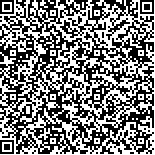附件
|
| 引用本文: | 王银平,谷孝鸿,曾庆飞,毛志刚,王文侠,谷先坤,李旭光.太湖不同生态型湖区湖鲚(Coilia ectenes taihuensis)食物组成及其季节变化.湖泊科学,2016,28(5):1078-1085. DOI:10.18307/2016.0518 |
| WANG Yinping,GU Xiaohong,ZENG Qingfei,MAO Zhigang,WANG Wenxia,GU Xiankun,LI Xuguang.Seasonal variations in the diet composition of Coilia ectenes taihuensis in different ecotypes of Lake Taihu. J. Lake Sci.2016,28(5):1078-1085. DOI:10.18307/2016.0518 |
|
| |
|
|
| 本文已被:浏览 8399次 下载 5325次 |

码上扫一扫! |
|
|
| 太湖不同生态型湖区湖鲚(Coilia ectenes taihuensis)食物组成及其季节变化 |
|
王银平1,2, 谷孝鸿1, 曾庆飞1, 毛志刚1, 王文侠1,2, 谷先坤1,2, 李旭光1,2,3
|
|
1.中国科学院南京地理与湖泊研究所湖泊与环境国家重点实验室, 南京 210008;2.中国科学院大学, 北京 100049;3.江苏省淡水水产研究所, 南京 210017
|
|
| 摘要: |
| 利用单船表层单囊拖网于2013年212月分别在太湖不同生态型湖区(敞水湖区和草型湖区)采集湖鲚(Coilia ectenes taihuensis)样品,同时用刺网补充大个体样品.通过胃含物鉴定,分析湖鲚饵料生物的种类及数量季节和湖区间差异,同时测定湖鲚摄食率、肥满度和食物选择系数等.结果显示,湖鲚主要食物为浮游枝角类和桡足类,此外,水生昆虫、轮虫和小型鱼虾也是湖鲚的重要食物来源.湖鲚食物组成季节变化明显,冬季以桡足类的哲水蚤(Calanus spp.)、剑水蚤(Cyclops spp.)为主,夏、秋季则以枝角类的象鼻溞(Bosmina spp.)、裸腹溞(Moina spp.)和盘肠溞(Chydorus spp.)为主.不同湖区湖鲚食物种类差异明显,草型湖区水生昆虫、鱼虾较敞水湖区多,桡足类较敞水湖区少.不同湖区间湖鲚食物数量差异明显,敞水湖区湖鲚平均食物数量为788.98±262.4 ind./尾,而草型湖区仅为298.85±71.1 ind./尾.湖鲚主动摄食大型枝角类,如僧帽溞(Daphnia cucullata)、低额溞(Simocephalus spp.)和大型溞(Daphnia magna),选择指数(Ii)介于0.59~1.00之间.小型裸腹溞(Moina spp.)也是湖鲚主动选择的食物(0.62< Ii< 0.95),但湖鲚对桡足类选择性较低,这可能与桡足类较强的逃避能力有关.湖鲚对食物选择性的季节变化明显,如冬季回避透明薄皮溞(Leptodora kindti),而夏季则主动选择,但不同湖区湖鲚对食物的选择差别较小.本研究结果有利于从食物网层面剖析湖鲚种群增长原因,进而通过生物操纵理论对湖鲚种群进行控制,最终为形成合理的湖泊渔业结构和湖泊环境修复提供科学依据. |
| 关键词: 湖鲚 食物组成 生态型 渔业结构 时空变化 太湖 |
| DOI:10.18307/2016.0518 |
| 分类号: |
| 基金项目:国家自然科学基金项目(31270506,31400399)和江苏省水产三新工程项目(Y2014-39)联合资助. |
|
| Seasonal variations in the diet composition of Coilia ectenes taihuensis in different ecotypes of Lake Taihu |
|
WANG Yinping1,2, GU Xiaohong1, ZENG Qingfei1, MAO Zhigang1, WANG Wenxia1,2, GU Xiankun1,2, LI Xuguang1,2,3
|
|
1.State Key Laboratory of Lake Science and Environment, Nanjing Institute of Geography and Limnology, Chinese Academy of Sciences, Nanjing 210008, P. R. China;2.University of Chinese Academy of Sciences, Beijing 100049, P. R. China;3.Freshwater Fisheries Research Institute of Jiangsu Province, Nanjing 210017, P. R. China
|
| Abstract: |
| In order to investigate the spatial and temporal diet variations of Coilia ectenes taihuensis, a special trawl and gill net were employed to sample fish in different ecotypic lakes (open water and aquatic-type zones) of Lake Taihu from February to December, 2013. In addition, feeding rate, fatness index and selectivity for different food items were examined for the purpose to study the growth and food preference of the fish. Observation of the gut contents indicated that C. ectenes taihuensis consumed a diverse assortment of prey, such as zooplankton, fish larvae, shrimp and aquatic insects, while cladocerans and copepods were the dominant components. The diet composition of C. ectenes taihuensis varied greatly with the seasons, pelagic copepod (mainly Calanoida and Cyclops) was the main prey in the winter, while pelagic cladocera (mainly Bosmina spp., Moina spp. and Chydorus spp.) was the dominant prey in the rest seasons. Compared with the two lake zones with different ecotypes, C. ectenes taihuensis in aquatic-type zone preyed more upon fish larvae, shrimp and aquatic insects and less upon copepod, while fish larvae and shrimp merely appeared in stomach of C. ectenes taihuensis with body length over 13.5 cm. The difference is obvious between the prey amounts of different sampling areas. 788.98±262.4 preys per fish were found in C. ectenes taihuensis stomach sampled from open water zone, while merely 298.85±71.1 preys per fish in aquatic-type zone. Feeding rates have a visible change with seasons, showing higher in the summer and winter and lower in the spring and autumn. The fish were willing to prey on large-sized cladocera, such as Daphnia cucullata, Simocephalus spp. and Daphnia magna, which the selectivity index(Ii) fluctuated between 0.59 and 1.00. In addition, C. ectenes taihuensis showed high selectivity (0.62< Ii< 0.95) for small-sized Moina spp., but a low selectivity for copepod due to their high escape capacity. The feeding habits of C. ectenes taihuensis varied greatly with seasons, but little with area, for example, C. ectenes taihuensis avoided preying on Leptodora spp. in winter but a high selectivity in summer. Gut content analysis of C. ectenes taihuensis help us to expound the cause of population growth based on food web theory, then provide effective measures to inhibit C. ectenes taihuensis population according to biomanipulation, and finally provide suggestions and foundations for adjusting freshwater fisheries structure and lake management. |
| Key words: Coilia ectenes taihuensis diet composition ecotype fisheries structure temporal and spatial variation Lake Taihu |
|
|
|
|